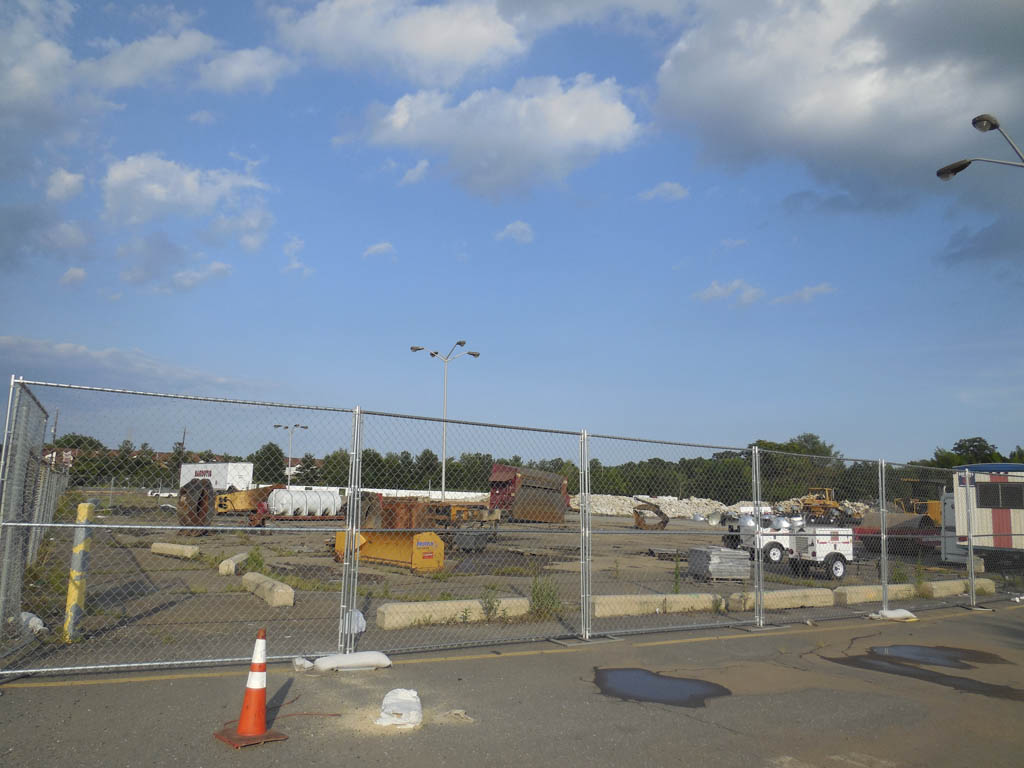BY JENNIFER AMATO
Staff Writer
NORTH BRUNSWICK – One year after a massive nine-alarm fire destroyed one million square feet of warehouse space at the DCH Collision Center on Livingston Avenue in North Brunswick, information is limited as to the fire investigation, the future of the property and any potential lasting environmental and health hazards.
The blaze started around 1:30 a.m. on July 22, 2015, in the multi-tenanted warehouse building at 1600 Livingston Ave.
The original Studebaker factory dates to the 1930s, though the site had been most recently inhabited by tenants Achim Import, DCH Collision Center/Brunswick Toyota Body Shop, Fabian Transport, Hja Logistics, Aflex, Jordan Accessories, DMD Mechanical General Contractors — which includes fire sprinkler services — and a car export company.
A joint investigation is still being conducted by the North Brunswick Fire Marshal’s Office, the North Brunswick Detective Bureau and the Middlesex County Prosecutor’s Office.
There is “no status” on the investigation, according to Michael Hritz, director of North Brunswick’s Department of Community Development.
“[It] remains open,” he said.
When questioned last year, then-Fire Marshal Craig Snediker could not release information about if the fire alarms were working or if the sprinkler system was operating correctly. He also did not know if there were any structural concerns, such as asbestos or lead in the paint, since the building was so old.
In the meantime, the warehouse has been demolished in the hopes of rebuilding the site.
“We [the township] have been engaged by the property owner with their conceptual plans for rebuilding two new warehouse buildings on the site. I expect it may be the subject of a land use application later this year. As of now, it is simply discussion and no formal action has been taken,” Hritz said.
More than 200 firefighters from 100 companies in 11 counties assisted in fighting the blaze and pocket fires over four days.
Authorities decided to evacuate upwards of 200 residents of nearby apartment complexes, including the North Brunswick Manor, the Hearthwood at North Brunswick condominiums and the Birchwood Apartments through July 26, 2015. Approximately 100 residents checked into a shelter at Linwood Middle School set up by the American Red Cross.
Overall, officials do not believe there are any lasting environmental or health effects caused by the damage.
“The EPA’s role in last July’s North Brunswick fire was to support state and local authorities with air monitoring. The EPA did not take any air samples. Our readings were in real time and provided to the New Jersey DEP, Middlesex County Hazardous Materials Team and the Middlesex County Health Department,” said John Martin, press officer for the U.S. Environmental Protection Agency (EPA).
“Since we only performed air monitoring as opposed to sampling there are no available data that has been through a QA/QC process. We monitored for particulates (smoke), as well as cyanide and chlorine. We did not see amounts of either material that was a cause of concern to us or the Health Department.”
Bob Considine of the New Jersey Department of Environmental Protection (DEP) said he was doubtful air or water monitoring was going on at a site a year after a fire.
According to Middlesex County officials, the county never received a summary report from either DEP or EPA.
Initially, Dwayne Harrington, a representative of the EPA, said there was little concern about any environmental effects.
“This fire is about the smoke more than anything else,” Harrington had said. “The chemicals associated with this type of fire, which is a plastic fire, are largely volatilizing up and mostly out of harm’s way.”
Harrington said initial testing did not reveal any health threats, as the chemicals being generated by the plastic go higher up into the atmosphere.
The DEP’s Air Monitoring department had a permanent fine particulate (PM2.5) monitor located off Ryders Lane on the Cook College campus of Rutgers University, which is closest to the fire, Considine said at the time, noting that “these concentrations are equivalent to good and moderate air quality levels.”
EPA did not conduct air sampling, which is where there would be validated data and a report, but rather conducted real-time air monitoring for purposes of immediate health and safety, Elias Rodriguez, public information officer for the EPA, said last year. Once the smoke was gone, there was no further risk, he had said.
Nonetheless, over the past year, 126 workers compensation claims had been filed through the Garden State Municipal Joint Insurance Fund as a mechanism to allow health screenings for North Brunswick’s first responders and township officials who spent extended periods of time at the site.
The breakdown was 19 public safety, four community development, 19 public works, one emergency management, 24 Fire Co. 1, 25 Fire Co. 2, 32 Fire Co. 3 and two rescue squad claims, according to a document prepared by the township. Although firefighters and rescue squad members are volunteers, they are covered by the township’s insurance.
The insurance fund set up the process of a medical screening, then-Business Administrator Robert Lombard said, which included an interview with a nurse case manager and then possible referral for a pulmonary exam to check breathing function and conduct chest X-rays.
Although every firefighter who was on the backside of the warehouse, which was downwind of the fire, was outfitted in proper firefighting gear, Lombard said last year, police officers, Department of Publics Work employees and township administrators who were on scene — some for 20-hour shifts at a time — were not wearing anything to protect them.
According to Kathryn Monzo, current business administrator, worker’s comp claims, because the claims deal with health issues, are generally confidential.
However, she did say that only two claims remain open for follow-up and are “soon to be closed.” The township is not legally allowed to be specific regarding the type of claim, she said.
Contact Jennifer Amato at [email protected].

